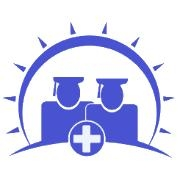How Long Does It Take to Become a Medical Biller and Coder?

If you're considering a career in the healthcare industry but don't want to spend years in medical school, becoming a medical biller and coder might be the perfect option for you. Medical billing and coding is a vital part of the healthcare system, ensuring that patients and healthcare providers are accurately billed for the services rendered. In this blog post, we will explore what it takes to become a medical biller and coder, including the training requirements and the time it takes to become certified.
Medical Biller and Coder training requirements
To become a certified medical biller and coder, there are certain training requirements that must be met. These requirements may vary depending on the certification organization, but generally include:
-
High School Diploma or Equivalent: Most certification programs require applicants to have a high school diploma or GED.
-
Completion of a Training Program: Candidates must complete a medical billing and coding training program from an accredited institution. This can be a certificate program or an associate degree program.
-
Certification Exam: After completing the training program, individuals must pass a certification exam to become a certified medical biller and coder. The most recognized certification organizations for medical billing and coding include the American Academy of Professional Coders (AAPC) and the American Health Information Management Association (AHIMA).
How to get a job after classes
Once you have completed your medical billing and coding training and obtained certification, it's time to start looking for job opportunities. Here are some steps you can take to increase your chances of getting hired:
-
Update Your Resume: Highlight your training, certification, and any relevant experience in your resume. Tailor it to showcase your skills and qualifications for the medical billing and coding field.
-
Network: Attend industry events, join professional organizations, and connect with professionals in the field. Networking can often lead to job opportunities or valuable insights into the industry.
-
Apply for Positions: Search for job openings in hospitals, clinics, insurance companies, and other healthcare facilities. Online job boards and career websites are great resources for finding medical billing and coding positions.
-
Prepare for Interviews: Familiarize yourself with common interview questions and practice your responses. Be prepared to discuss your training, certification, and how your skills align with the requirements of the job.
-
Continuing Education: As the field of medical billing and coding continues to evolve, it's important to stay updated with the latest industry trends and regulations. Consider pursuing continuing education courses or attending workshops to enhance your skills and knowledge.
Final Thoughts
Becoming a medical biller and coder can be a rewarding career choice for those interested in the healthcare industry. While the time it takes to become certified may vary, the training and certification process is relatively straightforward. By investing in the right training program, obtaining certification, and actively seeking job opportunities, you can embark on a successful career in medical billing and coding. So, if you're looking for a fulfilling career that doesn't require years of schooling, consider becoming a medical biller and coder.
For those looking to get started in this field, Dreambound's array of state-specific guides can be a valuable resource. And if you're in a different area, don't miss out on our other helpful guides.
Exploring a variety of professional opportunities? Dreambound has many extensive guides to help you make informed decisions. Check out these guides:

Sunshine is a member of the School Growth team at Dreambound, where she assists students and schools with their billing and onboarding needs. She is a licensed mechanical engineer. Outside of work, she enjoys road trips with her family, discovering cozy cafes, and exploring her love for art.




